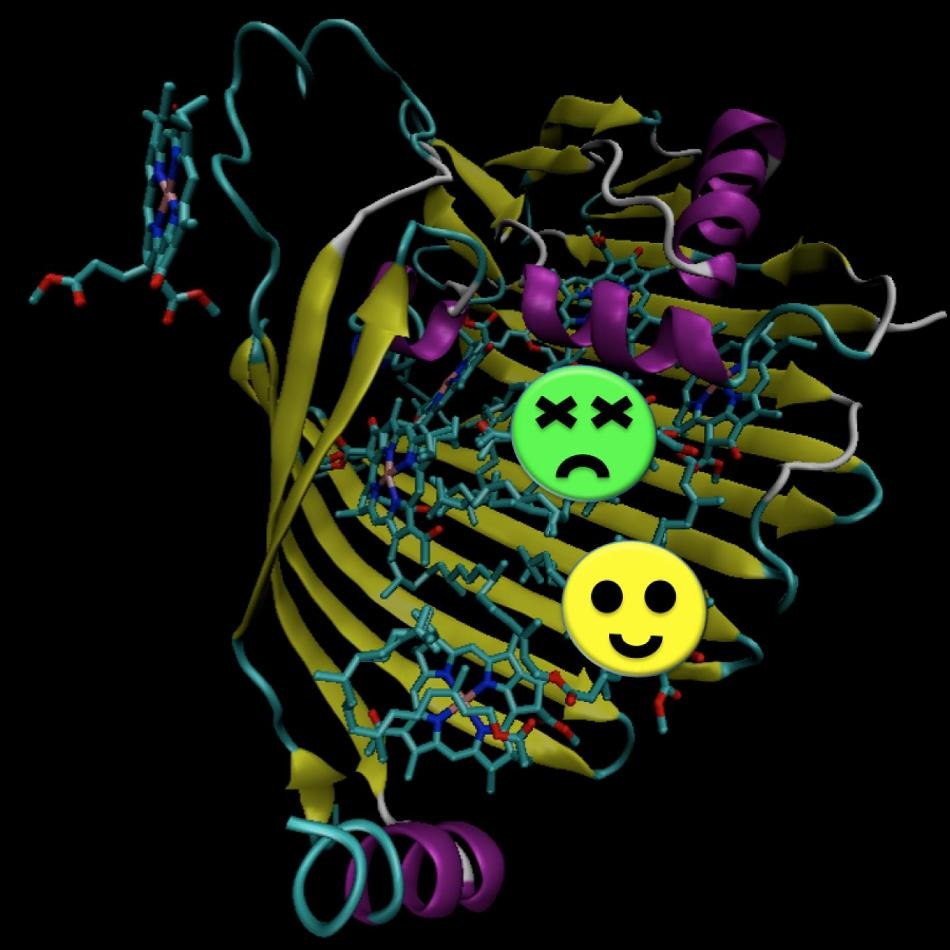May 22 2018
An international team of researchers including University of Groningen theoretical physicist Thomas la Cour Jansen state that molecules that are involved in photosynthesis display the same quantum effects as non-living matter. For the first time, quantum mechanical behavior was confirmed to exist in biological systems that are associated with photosynthesis.
The analysis of these quantum effects in photosynthesis may aid in the creation of nature-inspired light-harvesting devices. The results were reported in the May 21 issue of the Nature Chemistry.
 The figure shows the photosynthetic complex of light-harvesting green sulfur bacteria. The green and yellow circles highlight the two molecules simultaneously excited. (Image credit: Dr. Thomas la Cour Jansen/University of Groningen)
The figure shows the photosynthetic complex of light-harvesting green sulfur bacteria. The green and yellow circles highlight the two molecules simultaneously excited. (Image credit: Dr. Thomas la Cour Jansen/University of Groningen)
For a number of years now, there has been a discussion about quantum effects in biological systems. The elementary idea is that electrons can be in two states simultaneously until they are detected. This may be equated to the thought experiment called "Schrödinger's Cat." The cat is locked in a box with a vial of a poisonous substance. If the cap of the vial is locked with a quantum system, it may concurrently be open or closed, so the cat is in a combination of the states "dead" and "alive" until someone opens the box and observes the system. This is exactly the apparent behavior of electrons.
Vibrations
In a previous study, researchers had already discovered signals signifying that light-harvesting molecules in bacteria may be excited into two states concurrently. In itself this substantiated the contribution of quantum mechanical effects, however, in those experiments, that excited state apparently continued over 1 picosecond (0.000 000 000 001 second). This is a lot longer than one would anticipate on the basis of quantum mechanical theory.
Jansen and his colleagues demonstrate in their publication that this previous observation is incorrect. "We have shown that the quantum effects they reported were simply regular vibrations of the molecules." Therefore, the researchers continued the hunt. "We wondered if we might be able to observe that Schrödinger cat situation."
Superposition
They used various polarizations of light to conduct measurements in light-harvesting green sulfur bacteria. The bacteria have a photosynthetic complex, composed of seven light-sensitive molecules. A photon will excite two of those molecules; however, the energy is superimposed on both. Therefore, just like the cat is alive or dead, one or the other molecule is excited by the photon.
In the case of such a superposition, spectroscopy should show a specific oscillating signal. And that is indeed what we saw. Furthermore, we found quantum effects that lasted precisely as long as one would expect based on theory and proved that these belong to energy superimposed on two molecules simultaneously.
Thomas la Cour Jansen, Theoretical Physicist
Jansen concludes that biological systems display identical quantum effects as non-biological systems.
The observation methods formulated for this study may be applied to a variety of systems, biological as well as non-biological. Jansen is content with the outcome. "This is an interesting observation for anyone who is interested in the fascinating world of quantum mechanics. Moreover, the results may play a role in the development of new systems, such as the storage of solar energy or the development of quantum computers."